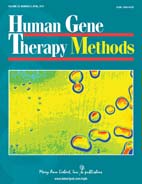 Duchenne muscular dystrophy (DMD) typically occurs due to truncating mutations in the DMD gene that result in a lack of expression of the dystrophin protein in muscle fibers. A variety of therapies under development are directed toward restoring dystrophin expression at the subsarcolemmal membrane, including gene transfer. In a trial of intramuscular AAV-mediated delivery of a therapeutic mini-dystrophin construct, the presence of a population of T cells that had been primed to recognized dystrophin epitopes prior to transgene delivery were identified in two of six subjects. As the presence of pre-existing T-cell immunity may have a significant effect on the success of therapeutic approaches for restoring dystrophin, the authors sought to determine the prevalence of such immunity within a DMD cohort from their MDA clinic. Dystophin-specific T cell immunity was evaluated in subjects with DMD who were either receiving the glucorticoid steroids prednisone (n= 24) or deflazacort (n=29), or who were not receiving steroids (n=17), as well as from normal age-matched controls (n= 21). They show that increasing age correlates with an increased risk for the presence of anti-dystrophin T-cell immunity, and that treatment with either corticosteroid decreases risk compared to no treatment, suggesting that steroid therapy in part may derive some of its benefit through modulation of T cell responses. The frequency of dystrophin-specific T cells detected by ELISpot assay was lower in subjects treated with deflazacort versus prednisone, despite similar overall corticosteroid exposure, suggesting that the effects of the two corticosteroids may not be identical in DMD patients. T cells targeted epitopes upstream and downstream of the dystrophin gene mutation and involved the CD4+ helper and/or CD8+ cytotoxic subsets. These data confirm the presence of pre-existing circulating T-cell immunity to dystrophin in a sizable proportion of DMD patients, and emphasize the need to consider this in the design and interpretation of clinical gene therapy trials.
Duchenne muscular dystrophy (DMD) typically occurs due to truncating mutations in the DMD gene that result in a lack of expression of the dystrophin protein in muscle fibers. A variety of therapies under development are directed toward restoring dystrophin expression at the subsarcolemmal membrane, including gene transfer. In a trial of intramuscular AAV-mediated delivery of a therapeutic mini-dystrophin construct, the presence of a population of T cells that had been primed to recognized dystrophin epitopes prior to transgene delivery were identified in two of six subjects. As the presence of pre-existing T-cell immunity may have a significant effect on the success of therapeutic approaches for restoring dystrophin, the authors sought to determine the prevalence of such immunity within a DMD cohort from their MDA clinic. Dystophin-specific T cell immunity was evaluated in subjects with DMD who were either receiving the glucorticoid steroids prednisone (n= 24) or deflazacort (n=29), or who were not receiving steroids (n=17), as well as from normal age-matched controls (n= 21). They show that increasing age correlates with an increased risk for the presence of anti-dystrophin T-cell immunity, and that treatment with either corticosteroid decreases risk compared to no treatment, suggesting that steroid therapy in part may derive some of its benefit through modulation of T cell responses. The frequency of dystrophin-specific T cells detected by ELISpot assay was lower in subjects treated with deflazacort versus prednisone, despite similar overall corticosteroid exposure, suggesting that the effects of the two corticosteroids may not be identical in DMD patients. T cells targeted epitopes upstream and downstream of the dystrophin gene mutation and involved the CD4+ helper and/or CD8+ cytotoxic subsets. These data confirm the presence of pre-existing circulating T-cell immunity to dystrophin in a sizable proportion of DMD patients, and emphasize the need to consider this in the design and interpretation of clinical gene therapy trials.
